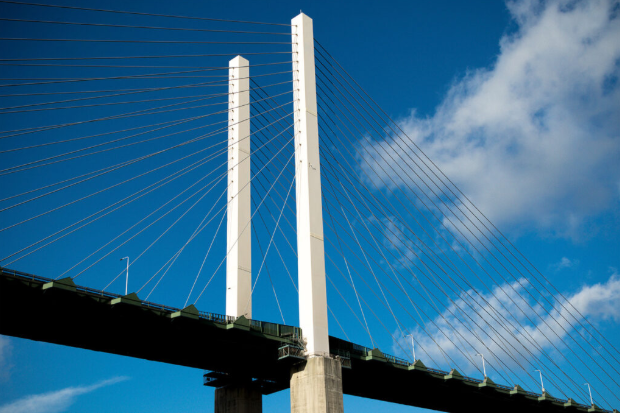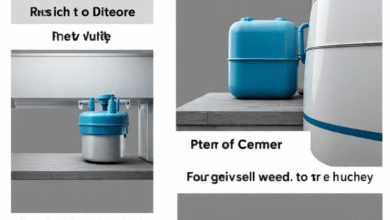Dartford Crossing: Everything You Need to Know

The Dartford Crossing is one of the busiest and most important road links in the United Kingdom. Every day, thousands of vehicles pass through it, connecting the north and south sides of the River Thames. If you are planning a trip in the southeast of England or want to understand how this crossing works, this guide will give you everything you need to know about the Dartford Crossing.
The Dartford Crossing is not just a bridge. It is actually a combination of two tunnels and a bridge. Together, they make it easier for vehicles to move across the River Thames. It is part of the M25 motorway, which circles London, and it plays a key role in reducing traffic congestion in the capital.
What is the Dartford Crossing?
The Dartford Crossing is made up of three main parts:
- The Queen Elizabeth II Bridge – This is a large cable-stayed bridge that opened in 1991. It is used for southbound traffic.
- The Dartford Tunnels – There are two tunnels built in 1963 and 1980, used mainly for northbound traffic.
The crossing connects Dartford in Kent (south of the Thames) to Thurrock in Essex (north of the Thames). It allows cars, trucks, and buses to travel efficiently without having to take long detours.
Why is the Dartford Crossing Important?
The Dartford Crossing is very important for several reasons:
- Traffic Flow: It helps reduce traffic congestion in London by providing an easy way to cross the River Thames.
- Economic Benefits: Many businesses depend on the crossing for transporting goods quickly.
- Connectivity: It connects key areas in the southeast of England and is part of the major M25 motorway.
Without this crossing, drivers would have to travel much longer distances to find another crossing point.
History of the Dartford Crossing
The Dartford Crossing has an interesting history:
- 1963: The first tunnel opened to ease traffic congestion in London.
- 1980: A second tunnel was added due to increasing traffic.
- 1991: The Queen Elizabeth II Bridge was built to allow more vehicles to cross safely.
Over time, the crossing has been upgraded with new technology to improve traffic flow and safety
How to Use the Dartford Crossing
The Dartford Crossing is unique because it does not have toll booths anymore. Instead, drivers pay a Dart Charge, which is an online payment system. You can pay before or after your journey.
- Payment Methods: Online, by phone, or at Payzone outlets.
- Vehicles Allowed: Cars, motorcycles, trucks, and buses can use the crossing.
- Charges: The fees vary depending on the vehicle type.
It is important to pay the Dart Charge on time. Failing to pay can result in fines.
Tips for Crossing the Dartford Crossing
Here are some useful tips if you are planning to use the Dartford Crossing:
- Check Traffic Updates: Traffic can be heavy, especially during peak hours. Check online before traveling.
- Pay the Dart Charge: Avoid fines by paying the Dart Charge on time.
- Use a GPS or Map: The crossing is part of the busy M25, so GPS can help you navigate.
- Stay Alert: Watch for lane changes and speed limits.
Traffic and Congestion at Dartford Crossing
The Dartford Crossing is one of the busiest road links in the UK. Over 160,000 vehicles use it every day. Peak hours can be especially crowded.
- Morning Traffic: Heavy traffic from northbound commuters traveling to London.
- Evening Traffic: Southbound traffic increases as people return home.
- Weekends: Traffic is usually lighter but can increase during holidays.
Efforts like traffic cameras and electronic signs help manage the flow and keep drivers informed.
Conclusion
The Dartford Crossing is a vital part of the UK’s road network. It connects the north and south sides of the River Thames and helps millions of vehicles travel safely every year. With the combination of tunnels, a bridge, and modern payment systems, it has made crossing easier and faster. If you plan to use it, remember to check traffic updates, pay the Dart Charge, and drive safely. The Dartford Crossing is not just a road—it is a key part of life in southeast England.
FAQs
Q1: How much does it cost to cross the Dartford Crossing?
A1: The cost depends on your vehicle type. Cars usually pay a set fee, while larger vehicles like trucks pay more. Payments are made online or at Payzone outlets.
Q2: Can I pay at the crossing itself?
A2: No, there are no toll booths. You must pay using the Dart Charge system before or after your journey.
Q3: Are there restrictions for vehicles?
A3: Most vehicles can cross, but some oversized or hazardous goods vehicles may need special permission.



